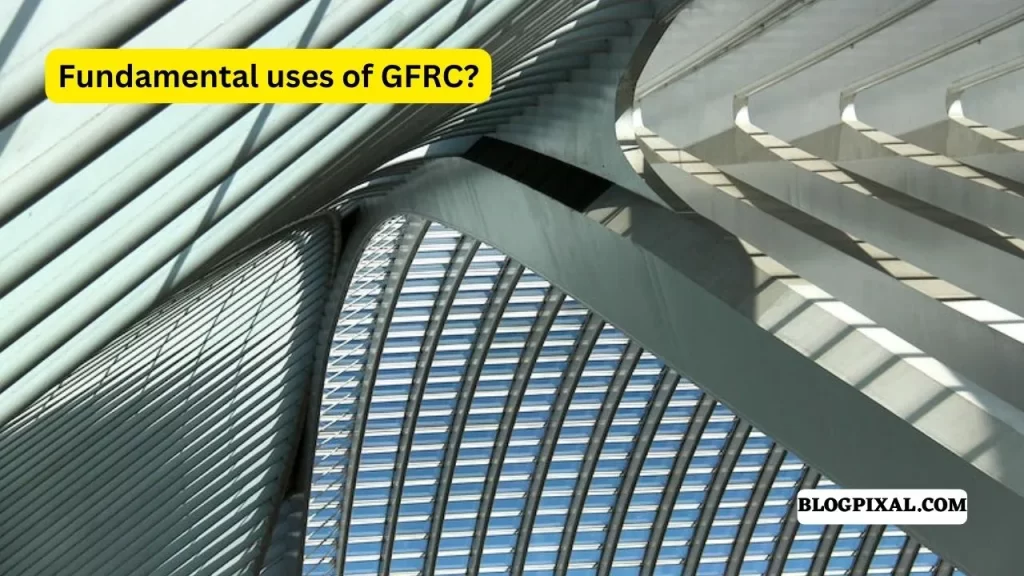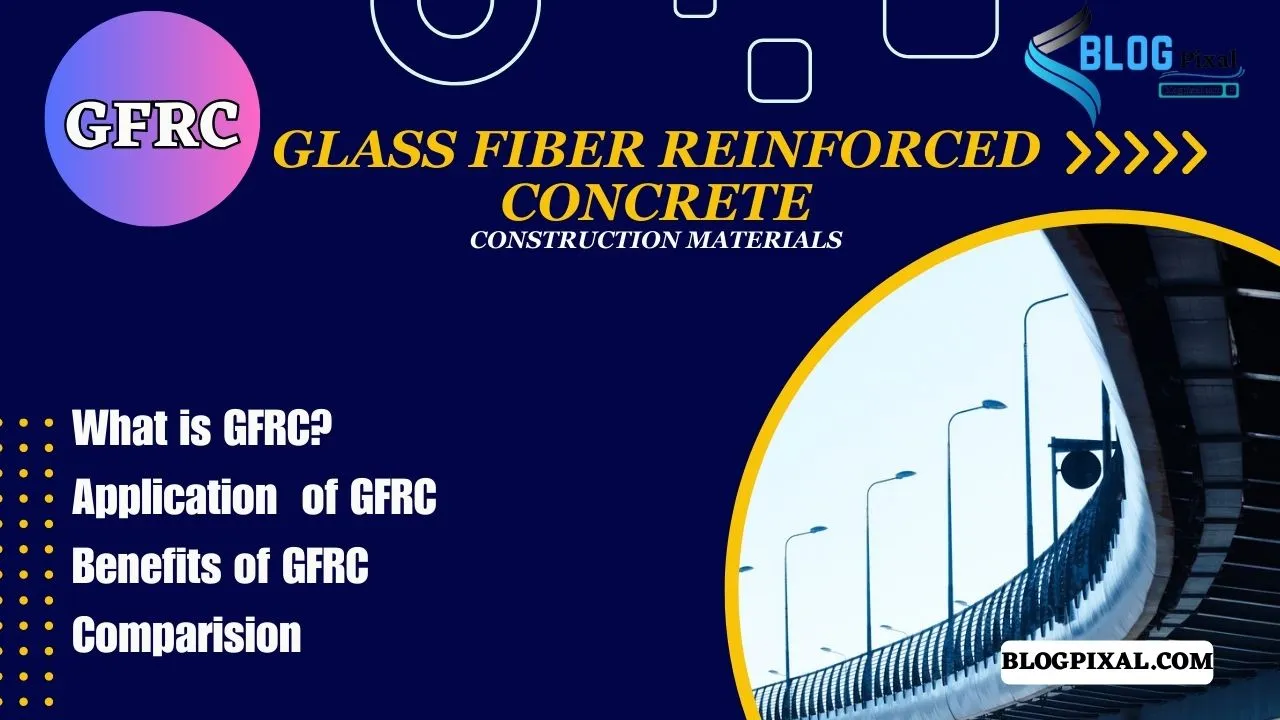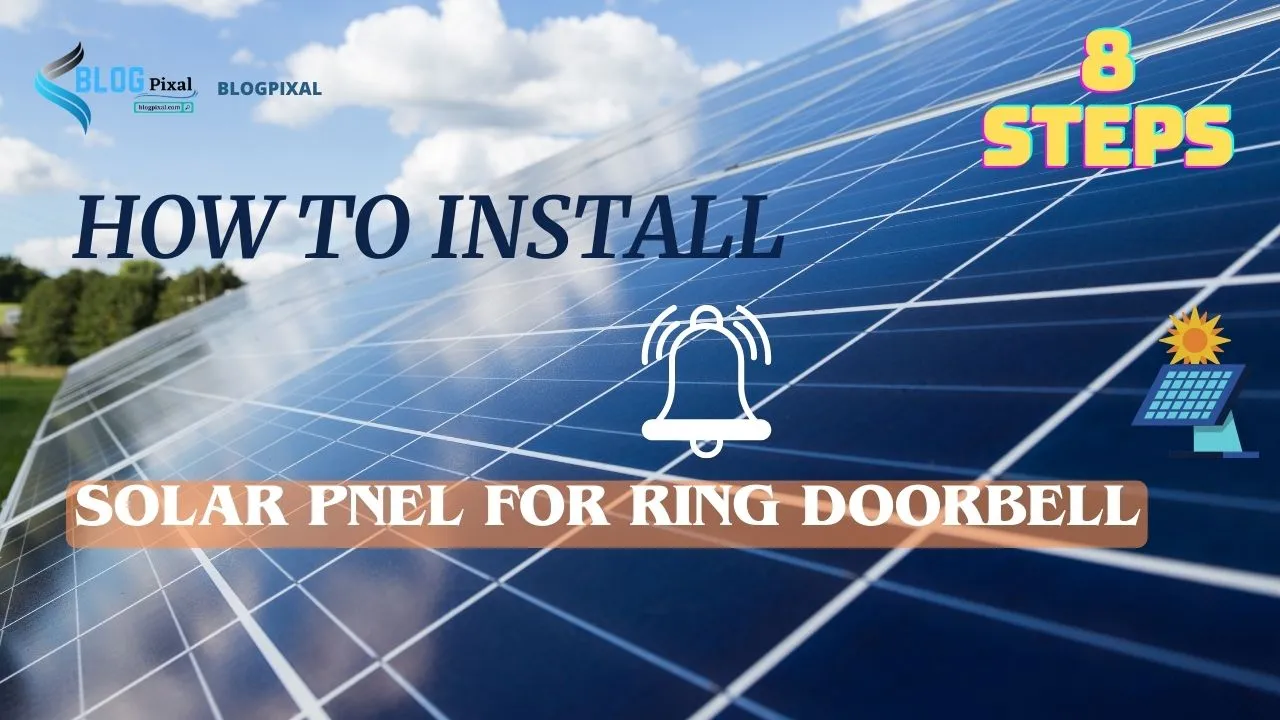Welcome to my next blog. Today I will explain all about Glass Fiber Reinforced Concrete. CFRC refers to Glass Fiber Reinforced Concrete. This article explores GFRC in detail. We will discuss what it is, how it is composite, its applications and benefits, as well as its drawbacks. You can Scroll for your Required Topic.
Concrete are used in a wide range of construction projects. Different type of construction projects use concrete from building foundations and walls to towering structures like the Burj Khalifa or Shanghai Tower.
Concrete has developed in different forms like Glass fiber, Self-level, and other concrete due to the diversity of concrete applications. These solid forms vary significantly in their physical properties, presence, utility, benefits, and various other factors.
Glass Fiber Reinforced Concrete is the most popular solid forms of concrete. This is a significant improvement over traditional concrete and has been increasingly used in countless applications.
Glass Fiber Reinforced Concrete (GFRC) incorporates cement, or cement plus sand, and glass fiber hydration products. Glass fibers are used for increase strength of concrete.
They were initially used in Russia to strengthen cement and concrete, although they were damaged by the highly alkaline Portland cement matrix.
Alkali-resistant glass fibers were developed in the UK and other countries. Glass fibers are available in chopped strand mat, crenate, yarn, and woven fabric forms.
Glass fibers are also used with epoxy resin coatings to protect against alkali attack on Portland cement.
What is Glass Fiber Reinforced Concrete?
GFRC stands for Glass Fiber Reinforced Concrete. In this type of fiber-reinforced concrete glass fibers are used so that this is called Glass Fiber Reinforced Concrete. The concrete matrix binds are used to enhance the mechanical properties and provide high tensile strength.
GFRC panels are lighter in weight than traditional concrete panels but still strong. Therefore, when additional reinforcement is required, using thinner GFRC panels instead of bulky steel reinforcement bars can save space.
How invented GFRC?
This is invented by the trial and trial process. The mechanical properties of concrete by enhancing concrete strength which is a very old method. For Example, the GFRC is used to construct historical concrete structures for the first time at the Colosseum and Pantheon.
Initially, attempts were made to improve flexibility in concrete by using Type C and Type E glass. However, this Trial was unsuccessful due to the presence of high alkalinity.
Europe experimented successfully with zirconium-based glass in the 1960s and 1970s, finding that a 17% zirconium content was ideal for the desired purpose.
That happen to invented of a Glass Fiber Reinforced Concrete for construction as a solid base concrete.
How thick is GFRC?
GFRC typically ranges in thickness from 3/4″ to 1″. If the thickness falls below this range, there is a chance of cracking or chipping of the concrete panel during handling.
GFRC can be manufactured with a minimum thickness lower than traditional concrete (1.5″ to 3″). This is an excellent advantage as thin GFRC panels can provide the same strength as traditional concrete panels.
How to Prepare Glass fiber Reinforced concrete
The preparation of Glass Fiber Reinforced Concrete (GFRC) using following materials
Glass fiber reinforced concrete (GFRC) is a unique type of concrete presence of incorporates glass fibers. The glass fiber makes it stronger and more durable. To prepare GFRC, several steps are involved.
Fine aggregates play an important role in the GFRC mix. Sand Should have high quality with 0.4 mm to 0.5 mm particle size. The Recommended particle size range from 0.3mm to 0.6mm. It’s important to strike a balance, as fine particles can reduce flowability, while coarser particles may cause surface irregularities upon impact.
Specifically Ordinary Portland cement is commonly used in GFRC. The weight of the cement should be equal to the weight of the Used sand. This ensures a proper balance and strength in the final mixture.
Ethylene Vinyl Acetate (EVA), Styrene Butadiene Rubber (SBR), and Acrylic Polymer are added to the concrete matrix mix. Acrylic polymer is Recommended to prepare for glass fiber-reinforced concrete. The recommended polymer-to-concrete ratio is typically around 6 grams of solid polymer per 100 grams of cementitious mix.
Water content is an important factor in the GFRC mix. Excessive water can destroy the mixture. So that it’s important to determine the total water content by considering the water content of all the components. The overall water-to-concrete ratio should have between [0.30 to 0.35] to achieve the desired consistency.
Manufacturers offer various GFRC mixes, with common additives such as silica fume and superplasticizers. These mixes help enhance the performance and workability of the GFRC.
Specifically alkali-resistant (AR) glass fibers are the defining component of GFRC. These fibers with a diameter of 10mm to 50mm are added in proportions of up to 5% by weight. They can be mixed with cement and water in a pan or paddle mixer. Additionally, small amounts of lubricating mixtures like polyethylene oxide or methylcellulose can be included.
Once the Glass Fiber Reinforced Concrete mixture is prepared, it can be applied in various ways. It can be sprayed or cast into molds or produced through extrusion or injection-molding processes. In some cases, the fibers can be cut on-site and sprayed along with a slurry into the mold for production. Shell roofs and panels are particularly effective and convenient for casting GFRC.
If you can follow the above guidelines properly you can successfully prepare glass fiber-reinforced concrete (GFRC). Its unique construction concrete makes it a reliable and durable choice for a variety of construction projects.
Method of GFRC
There are three construction methods for Glass Fiber Reinforced Concrete (GFRC):
Spray-up GFRC
This is a traditional method used to make precast concrete panels. Glass fiber-reinforced concrete is sprayed into a mold manually.
Preparing glass fiber reinforced concrete (GFRC) involves adding around 5% glass fiber material, which is more than regular concrete mixes. Skilled workers and high-quality equipment are essential for better results.
Casting
Casting is a defined characteristic of premix concrete. The concrete mix is poured into a mold and then allowed to solidify.
This method is simpler and cheaper compared to spray-up GFRC. The molds in this method are required to be watertight. Casting cannot be done with rock molds.
Hybrid Casting
Hybrid casting is a combination of spray-up and premix methods. It involves using a peristaltic pump for concrete spraying and a special spray head.
You understand the hybrid method. In this method, both spray and casting are combined. Both properties are appearance in the hybrid method GFRC.
Skilled and experienced manpower and materials should be required for application. In terms of mixing, spray application offers greater strength to the concrete panels compared to casting methods.
Read also: Self Levelling Concrete
Properties of Glass Fiber Reinforced Concrete

What are the Physical properties of Glass Fiber Reinforced Concrete (GFRC):
Strength and Durability:
GFRC exhibits high compressive strength, making it resistant to crushing forces.
It also possesses excellent flexural strength, enabling it to withstand bending or twisting without breaking.
GFRC has high impact resistance, making it suitable for applications where impact loads are expected.
It has superior durability, resisting weathering, chemical attack, and deterioration over time.
Weight and Density:
GFRC is significantly lighter than traditional reinforced concrete due to the presence of glass fibers, which reduces its overall density.
The reduced weight of GFRC makes it easier to handle and transport during construction.
Its lower density also leads to reduced structural loads, making it suitable for applications where weight is a concern.
Fire Resistance:
GFRC has inherent fire-resistant properties due to the inclusion of glass fibers.
The glass fibers act as a reinforcement, providing enhanced fire resistance compared to standard concrete.
GFRC can withstand high temperatures without significant structural failure or loss of integrity.
Flexibility and Moldability:
GFRC exhibits greater flexibility compared to traditional concrete, allowing for more intricate designs and shapes.
It can be cast into thin sections without sacrificing strength, enabling the creation of lightweight architectural elements.
The flexible nature of GFRC also reduces the risk of cracking and improves its ability to withstand structural movements.
Surface Finish and Appearance
GFRC offers a wide range of surface finishes, including smooth, textured, or patterned, providing versatility in design options.
It can replicate the appearance of natural stone, wood, or other materials, allowing for aesthetic customization.
GFRC can be pigmented or stained to achieve various colors, enhancing its visual appeal.
Water Resistance:
GFRC has excellent water resistance, reducing the risk of moisture infiltration and subsequent damage.
It can be used in applications where exposure to water, such as swimming pools or exterior cladding, is expected.
GFRC’s water resistance properties contribute to its overall durability and longevity.
Thermal and Sound Insulation:
GFRC exhibits good thermal insulation properties, helping to regulate temperature and reduce energy consumption.
It also provides sound insulation, minimizing the transmission of sound waves and enhancing acoustic performance.
Environmental Sustainability
GFRC is considered environmentally friendly as it can be produced using recycled glass fibers, reducing waste and conserving natural resources.
Its lighter weight reduces transportation energy and carbon emissions.
The longevity and durability of GFRC contribute to sustainable construction practices by reducing the need for frequent replacements.
Also Read: Preparation of Room Wall for Painting
What are the fundamental uses of GFRC?

There are many applications and projects where glass fiber-reinforced concrete is an ideal option. Some of these include:
- Architectural elements: GFRC can be used to create architectural elements such as cladding, cornices, balustrades, and more.
- Interior design: GFRC panels can be used for wall panels, decorative screens, custom furniture, and other interior design elements.
- Furniture and fixtures: GFRC can be molded into various shapes to create unique furniture pieces and fixtures.
- Art and sculptures: The versatility of GFRC makes it suitable for creating intricate sculptures and artistic installations.
- Exterior building elements: GFRC can be used for external wall panels, facades, and other exterior design features.
- Concrete Countertops: GFRC countertops are now gaining popularity for their high aesthetic appeal and resistance to cracking. Countertops can be mixed with color pigments to achieve the desired hue.
- Panel Walls: GFRC panel walls reduce overall weight while providing a beautiful look. These panels are durable and suitable for both residential and office interiors.
- Concrete Dining Tables: Concrete dining tables are becoming a common sight in restaurants and homes. The lightweight nature and high gloss of GFRC make it an ideal choice for these tables. Integrated countertop designs and dining table creations often result in stunning centerpiece designs.
- Fireplace Surrounds: GFRC panels are suitable for creating attractive interior designs for fireplace surrounds due to their fire-resistant properties. GFRC components are also suitable for constructing fireplace hearths and mantels.
- Exterior Furniture: GFRC is resistant to adverse environmental conditions, making it an excellent option for outdoor furniture such as tables, benches, and chairs, as well as park fixtures.
The applications of Glass Fiber Reinforced Concrete (GFRC) generally spread across the following construction works:
- Renovation of Building
- Water and sewage works
- Bridge and tunnel lining panels
- Construction of permanent formwork
- Architectural cladding
- Acoustic barriers and screens
What are the advantages of GFRC?

Followings are the several advantages of Glass Fiber Reinforced concrete:
Fire resistance
GFRC is a fire-resistance construction concrete used for lightweight structures free from combustible minerals. The concrete matrix provides fire resistance and control the temperature.
Lightweight
This concrete is very lighter in weight with comparison traditional concrete. Easy to install and handle due to its lightweight.
Versatile application
Glass fiber-reinforced concrete has a wide range of applications. such as countertops, columns, panels, domes, and more. various sizes available in the market also you can create a self-design for pre-order.
Diverse Price Range
I have included three basic methods of GFRC. The Price range depends on the Production method of GFRC. There are three price ranges with spray-up GFRC being the most expensive, Casting is the cheapest, and hybrid production is between a range of other.
Positive Load Resistance
Positive load resistance of GFRC refers to its ability to withstand and support heavy loads or forces without cracking or failing, ensuring a strong and durable structure.
No External Reinforced Require
There is no need for external steel reinforcement due to the self-included glass fiber. GFRC has a pre-built reinforced for tensile strength. But this is in lightweight then easy to install and handle.
Weather Resistance
Glass Fiber Reinforced Concrete has an additional fiber coating for weather protection. The coated fiber helps to protect from moisture, alkali attached, and other environmental impacts. GFRC panels resist rain, humidity, alkali attacks, salt, and other environmental challenges.
How much does GFRC cost?
The cost of GFRC depends on various factors, such as:
It is recommended to GFRC precast or GFRC premix. This two form have different properties. Precast GFRC have desired size for installation and GFRC Premix is requires a special experience manpower to use it. It is important to proper mixing and casting to get better result.
Construction method: hybrid, spray or casting
A hybrid method of GFRC construction is the most popular due to the balance of strength and cost. It’s provide additional benefit in terms of strength and price compare with traditional concrete for the construction.
GFRC Panel Thickness and Area
The cost of GFRC is typically calculated based on the price per square foot for the given thickness. To have a better understanding of GFRC pricing, it is advisable to read our comprehensive guide on determining GFRC costs.
Disadvantages of GFRC
Followings are the some disadvantage of GFRC mentioned below:
- Higher initial cost compared to traditional concrete.
- Specialized expertise and equipment are required for manufacturing and installation.
- Limited availability of skilled GFRC contractors.
- Susceptible to fiber visibility if not properly mixed or finished.
- Prone to surface cracking if not handled or installed correctly.
- Challenging to repair or modify once cured.
- Requires careful detailing and reinforcement placement to avoid structural issues.
- Limited color options compared to other decorative concrete options.
- Requires proper curing and protection during installation to avoid moisture-related issues.
- Higher sensitivity to temperature changes during curing and early stages of installation.
Read More: 10 Best way to Reduce Construction Cost
Comparison between GFRC vs Traditional Concrete
| Aspect | Glass Fiber Reinforced Concrete (GFRC) | Traditional Concrete |
|---|---|---|
| Material Composition | Cement, fine aggregates, water, glass fibers | Cement, coarse aggregates, fine aggregates, water |
| Strength | High tensile and flexural strength | High compressive strength |
| Weight | Lightweight | Heavyweight |
| Durability | Highly durable with resistance to cracking | Susceptible to cracking and structural damage |
| Flexibility | Flexible and can be molded into complex shapes | Rigid and limited in shape options |
| Design Options | Versatile design possibilities with intricate details | Limited design options |
| Workability | Easier to work with due to reduced weight | Requires more effort due to higher weight |
| Fire Resistance | Offers better fire resistance | Moderate fire resistance |
| Thermal Insulation | Provides good thermal insulation | Limited thermal insulation |
| Chemical Resistance | Resistant to chemical attacks | Susceptible to chemical deterioration |
| Environmental Impact | Lower carbon footprint and reduced energy consumption | Higher carbon footprint and energy consumption |
| Construction Time | Faster installation due to lightweight panels | Slower installation due to heavier components |
| Maintenance | Low maintenance requirements | Regular maintenance may be needed |
| Cost | Relatively higher initial cost | Lower initial cost |
| Surface Finish | Smooth and consistent finish | Varied finishes depending on casting techniques |
| Seismic Performance | Provides better resistance to seismic activity | Moderate resistance to seismic activity |
| Sound Insulation | Offers good sound insulation | Limited sound insulation |
| Construction Applications | Facades, cladding, decorative elements | Structural elements, foundations, pavements |
| Transportation and Handling | Easier transportation and handling due to lighter weight | More challenging transportation and handling |
| Longevity | Long-lasting with minimal deterioration | May deteriorate over time with usage |
FAQs
What is Glass Fiber Reinforced Concrete (GFRC)?
Glass Fiber Reinforced Concrete (GFRC) is a composite material composed of cement, fine aggregates, water, and embedded glass fibers. It is a versatile construction material that offers high strength and durability.
How are glass fibers added to GFRC?
Glass fibers are added to GFRC during the mixing process. The fibers are typically pre-chopped and dispersed evenly throughout the concrete mix to provide reinforcement and enhance its mechanical properties.
What are the advantages of using GFRC?
GFRC offers several advantages, including high tensile and flexural strength, lightweight characteristics, design versatility, improved durability, resistance to cracking, and better fire resistance compared to traditional concrete.
What are the common applications of GFRC?
GFRC is commonly used in architectural and decorative applications such as facades, cladding, decorative panels, columns, and countertops. Its ability to be molded into complex shapes and its aesthetic appeal make it popular in various construction projects.
How does GFRC compare to traditional concrete in terms of cost?
GFRC generally has a higher initial cost compared to traditional concrete due to the additional cost of glass fibers and specialized manufacturing techniques. However, GFRC’s long-term durability and low maintenance requirements can offset the initial investment over time.










